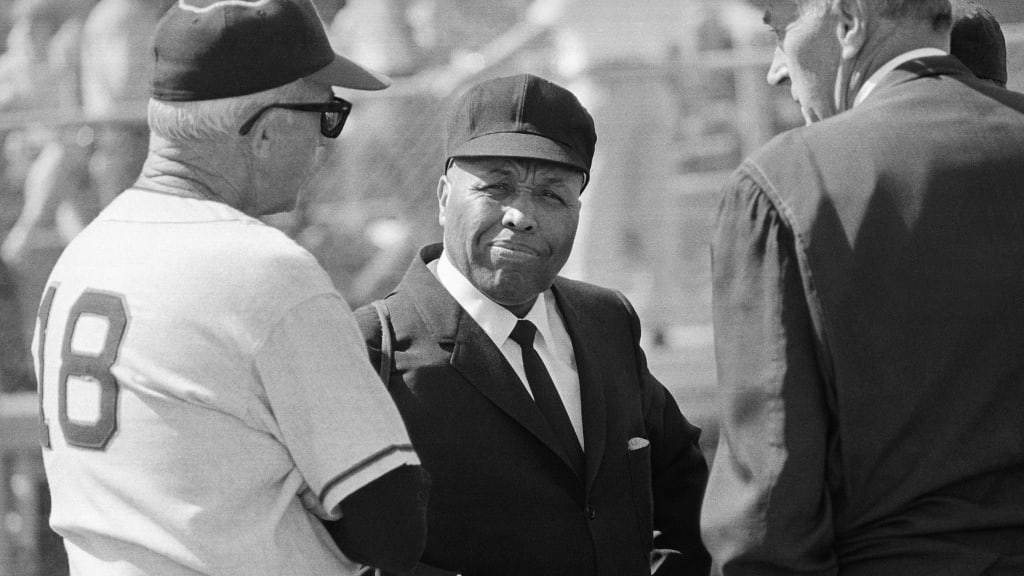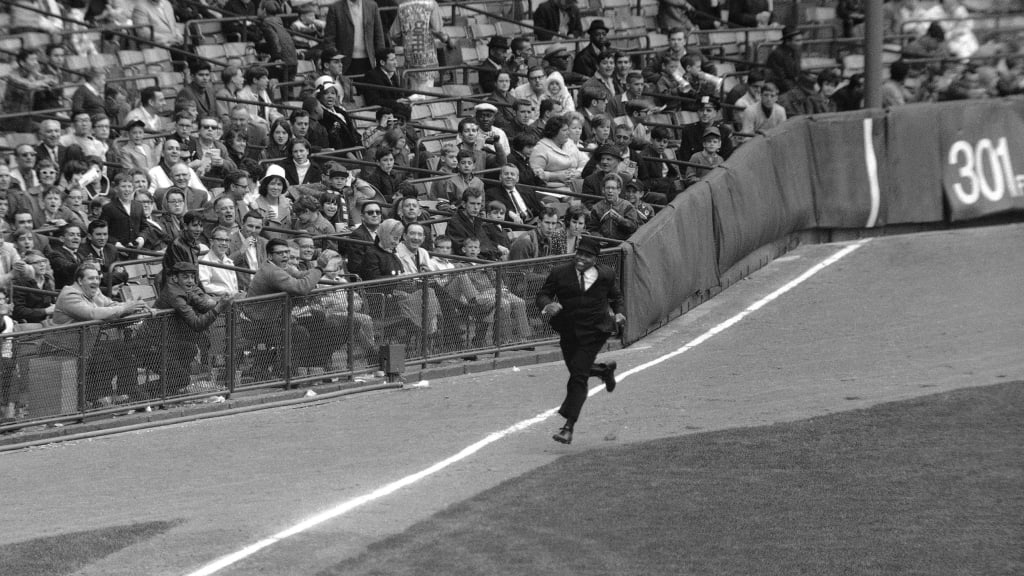A version of this story original ran in February 2022.
Jackie Robinson inspired countless Black athletes to pick up a glove and bat to play baseball -- but his impact goes far beyond those who played the game.
Case in point: Emmett Ashford.
Fifty-eight years ago, the American League announced that Ashford would become the first Black umpire in AL/NL history. That Feb. 20, 1966, announcement marked the realization of a dream that began the night Robinson signed with the Brooklyn Dodgers.
"I was lying on my cot one evening when the announcement came over the radio that Jackie Robinson had signed with the Brooklyn Dodgers. Right then, I said to myself, 'I'm going to be the first black umpire,'" Ashford said, according to the book "The Men in Blue: Conversations with Umpires."

By then, Ashford already had broken plenty of barriers -- and made plenty of sacrifices of his own.
Ashford came from a big family, and he worked shining shoes and selling magazines to help contribute. He was the first Black person to be elected class president at Jefferson High School in Los Angeles and to serve as editor of the school newspaper.
Ashford was also the only Black player on a semi-professional team called the Mystery Nine, which actually proved to be the springboard to his umpiring career.
"I'd usually ride the bench on Sundays, when we were playing good visiting clubs," Ashford told the Des Moines Register. "This one Sunday, they needed an umpire, so I got out there dressed conservatively in two-tone shoes, green slacks, a green coat and, I think, a green shirt. The customary collection taken up in the seventh inning was heavier than usual, so they asked me to keep right on umpiring."
That fateful day came in 1944.
Ashford went on to serve a stint in the Navy and later officiated high school basketball games, as well as basketball and football games at UCLA and USC -- but his passion remained on the diamond.
In 1951, Ashford took a three-month leave of absence from his job with the U.S. Postal Service to serve as an umpire in the Southwest International League. When it came time to do the same the following year, however, Ashford was unable to secure approval for another leave of absence.
Unwilling to give up his dream, Ashford instead retired from his job and turned his focus toward becoming a full-time umpire. It proved to be a long road for Ashford, who over a 15-year Minor League career became known as much for his theatrical calls as his stylish wardrobe that featured cuff-linked shirts. Theatrics aside, he established himself as one of the most respected umpires in the sport.

That reputation preceded Ashford when he received the call to the Major Leagues in 1966.
Ashford made history when he served as the third-base umpire when the Washington Senators hosted Cleveland for an Opening Day clash on April 11, 1966. Unfortunately for Ashford, he wasn't forced to make any calls in his debut, though he wasted no time living up to his reputation in the Major Leagues.
Ashford made it known that he would quickly track any fly ball down the line when serving as a first- or third-base umpire. He would also get out to make a call on any flares to shallow center when working second base, and he had no qualms about hustling down the line to make a ruling when he worked behind the plate.
"Ashford gets a better break on a fly ball than Paul Blair does," Hall of Famer Frank Robinson said in 1966, comparing the rookie umpire to the eight-time Gold Glove-winning center fielder and four-time World Series champion.
That became the norm, with Ashford earning the respect of players, managers and fans over his five-year career from 1966-70. He retired at the age of 56, one year beyond the AL's suggested retirement age of 55.
Ashford capped his career on the game's biggest stage, serving as an umpire for the 1970 World Series. Fittingly, Ashford had the call on the final play of that '70 Fall Classic, working first base in the Orioles' decisive Game 5 victory over the Reds. With the O's holding a 9-3 lead, Pat Corrales chopped a ball to third baseman Brooks Robinson, who fired to first baseman Boog Powell for the final out, as signaled by Ashford.
"It's been a long hard climb, but here I am," Ashford said at the time, "I've made it. This is the epitome of my life."
Following his retirement, Ashford served as a public relations adviser for Commissioner Bowie Kuhn. He continued to umpire in his spare time, including in the Minor Leagues, colleges and the old-timers games at Dodger Stadium in his native hometown of Los Angeles. He also became a pop culture icon, appearing in everything from television commercials to TV shows like "Ironside" and "The Jacksons," as well as playing an umpire in "The Bingo Long Traveling All-Stars & Motor Kings" 1976 feature film on life in the Negro Leagues.
Though Ashford is not honored in the National Baseball Hall of Fame, he is buried in Cooperstown, N.Y. After Ashford suffered a fatal heart attack at the age of 65, his wife, Virginia, sent her husband's ashes to Cooperstown in an urn that was then interred at Cooperstown's Lakewood Cemetery.
His grave sits on a hillside cemetery overlooking Otsego Lake approximately a half-mile from the Hall of Fame. The gravestone marking his burial plot reads: "He believed an umpire should have integrity, perseverance, dedication. As an American League umpire, 1965-1970, he added drama to baseball with his zestful, flamboyant style."
